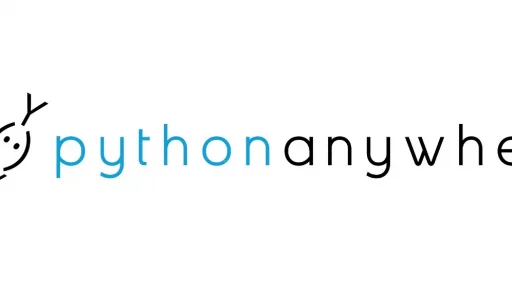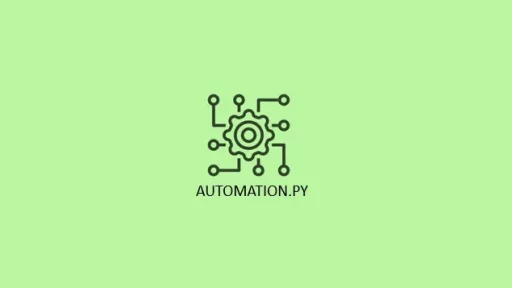Recently, I wrote an article using Python’s Folium to create an Interactive Map link here. Folium is an excellent tool for mapping data, but the Python ecosystem offers so many other fascinating libraries that can unlock creativity in unique ways.
1. Dash: Interactive Web Apps for Data Visualization
- Homepage: Dash
Dash is a great library if you want to build data-driven web applications. It’s built on top of Flask, Plotly, and React, allowing you to create beautiful dashboards with minimal effort. Dash excels at making interactive data visualizations, with drag-and-drop components, sliders, and more.
What makes Dash so powerful is its simplicity. You don’t need extensive knowledge of JavaScript or HTML to create dynamic, interactive web apps. If you’ve got a dataset and you want to turn it into an engaging dashboard, Dash is the tool for the job. Imagine pulling in your stock market data, creating visualizations, and embedding them in a full-fledged web app — all without leaving the comfort of Python.

2. Plotnine: Grammar of Graphics for Python
- Homepage: Plotnine
Plotnine brings the “Grammar of Graphics” to Python, inspired by the popular ggplot2 library in R. If you’ve ever wanted to create complex, layered graphics easily, Plotnine is the library to try. The beauty of Plotnine lies in its declarative approach to building plots. You define the relationships between data variables and aesthetics, and the library takes care of generating the visualization.
Whether you’re dealing with statistical data, scientific charts, or time series, Plotnine allows you to create multi-layered plots by stacking visual elements, like points, lines, or bars, on top of each other. This is great for anyone who enjoys data storytelling and needs precision in their visual outputs.

3. Shapely: Geometric Operations Made Simple
- Homepage: Shapely
Shapely is a library for performing geometric operations. It lets you create and manipulate geometrical shapes in 2D space, which is especially useful for geographic information system (GIS) projects. You can easily build shapes like polygons and lines, and then perform operations such as union, intersection, and difference between them.
One of the great things about Shapely is its efficiency. It allows you to handle spatial data effortlessly and integrates well with other libraries like GeoPandas and Matplotlib. Whether you’re calculating distances between points, analyzing areas, or working with maps, Shapely is a must-have in your toolkit.

4. Pydantic: Data Validation and Parsing Made Easy
- Homepage: Pydantic
Data validation is a critical part of any application, and Pydantic makes it simple. This library provides data validation and parsing based on Python’s type annotations. With Pydantic, you can define your data model, and it will automatically validate the data against the types you specify.
Imagine building an API where users submit data. Instead of writing complex validation logic, you can use Pydantic to ensure that the incoming data matches your expectations. If something’s wrong — such as a missing field or an incorrect type — Pydantic will catch it and throw an error. This is particularly useful for applications where you need to ensure data consistency and integrity.

5. Rich: Stunning Terminal Output
- Homepage: Rich
Rich is a fantastic library for enhancing the appearance of your terminal outputs. It allows you to create beautifully formatted text, tables, and even syntax-highlighted code. Whether you’re building command-line applications or just want to improve the readability of your logs, Rich can add a professional touch.
One of Rich’s best features is its ability to display progress bars and live updates, making it ideal for long-running tasks. You can create clean, well-structured output with just a few lines of code, which can make debugging or tracking progress a lot more enjoyable.

6. FastAPI: High-Performance Web Framework
- Homepage: FastAPI
FastAPI is one of the fastest-growing web frameworks in Python. It’s designed for building APIs and web applications with high performance in mind. FastAPI makes heavy use of Python’s type hints, allowing you to write concise code that remains highly readable. What sets FastAPI apart is its automatic generation of interactive API documentation via OpenAPI.
FastAPI can handle both simple and complex applications, from microservices to full-scale web platforms. Its performance is comparable to frameworks like Node.js, making it a great choice for applications that need to handle many requests efficiently. If you’re building RESTful APIs, FastAPI is a game-changer.

7. Tweepy: Harness the Power of Twitter
- Homepage: Tweepy
Social media is an integral part of many applications, and Tweepy is the go-to Python library for interacting with Twitter. Whether you want to automate posts, scrape data, or create a Twitter bot, Tweepy provides the tools to do it. It wraps Twitter’s API and makes it easy to fetch timelines, tweet content, and interact with users.
For example, you can create an app that pulls the latest trending hashtags or automatically retweets specific types of content. Tweepy is perfect for anyone looking to integrate social media into their Python projects.

8. SQLModel: SQL Databases Made Easy
- Homepage: SQLModel
SQLModel is an ORM (Object Relational Mapper) built on top of SQLAlchemy and Pydantic. It simplifies database interactions by allowing you to define data models in Python classes. SQLModel then automatically generates the corresponding SQL code to create and interact with your database.
If you’ve ever found SQLAlchemy a bit too verbose or complex, SQLModel might be the tool that makes database work more manageable. It bridges the gap between writing raw SQL queries and defining models programmatically. Whether you’re building small applications or large systems, SQLModel makes database operations feel intuitive and Pythonic.

Thank you for reading this article. We hope you found it helpful and informative. If you have any questions, or if you would like to suggest new Python code examples or topics for future tutorials/articles, please feel free to join and comment. Your feedback and suggestions are always welcome!
You can find the same tutorial on Medium.com.


